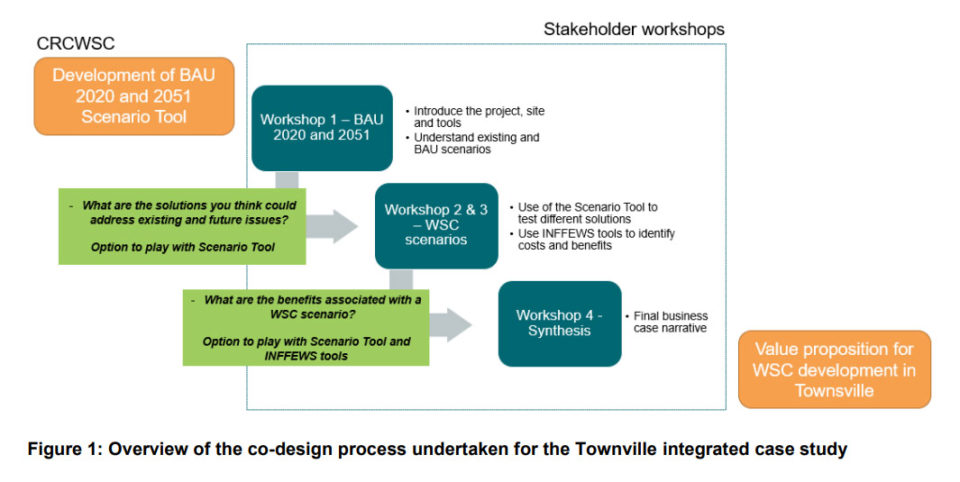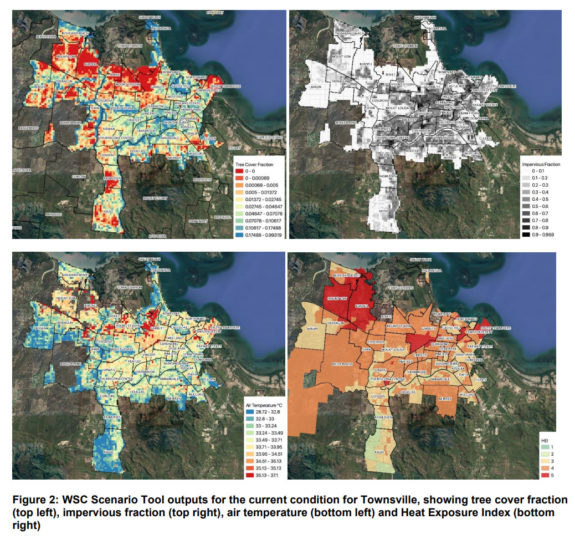Value proposition for water sensitive development in Townsville
Contact
Insight:
PROJECT DESCRIPTION
This project examined how to translate Townsville’s water sensitive vision into on-ground solutions and demonstrations to generate broad buy-in and commitment for water sensitive development. To explore this question, the Townsville case study focused on applying the CRCWSC’s Scenario Tool and INFFEWS Benefit: Cost Analysis and Value tools to assess the benefits of various water sensitive city interventions. These tools were applied at both the whole-of-city scale, along with the precinct scale, to explore how they add value across different scales and how the outputs can be used for different objectives.
THE DRIVERS
Biophysical drivers
- Townsville experiences water extremes of droughts and floods.
- Water security is a key issue for the region.
- Urban runoff impacts significant marine and coastal environments, including the Great Barrier Reef.
Social drivers
- Townsville has a high potable water demand due to irrigation of private lawns and gardens.
- The community has high expectations for liveability and a green city.
Institutional drivers
- Large-scale water infrastructure and institutions are prevalent, creating a locked-in pathway.
- Townsville experiences ‘boom–bust’ economic cycles.
- There is a disconnect between water servicing and land use planning outcomes.
THE INNOVATIONS
- Passively irrigated street trees – street trees irrigated by diverting stormwater flows from the road into the tree pit, resulting in healthy trees and larger canopies
- Increased verge widths – larger verges where possible to increase the area of vegetation compared with road surface
- Optimised irrigation – reduced amount of water used for irrigation that will still support healthy lawns
- Rainwater tanks – 5 kL rainwater tanks connected to internal uses (toilets and laundry) and used for irrigation.
THE OUTCOMES
- reduced impervious cover (2.5%)
- increased tree cover (2.6%)
- reduced surface and air temperature and Extreme Heat Stress
- reduced stormwater runoff (8,281 ML)
- increased infiltration (2,769 ML)
- reduced water demand (14,466 ML).
Additional benefits include higher property values associated with increased tree canopy cover, improved health and productivity associated with reduced temperatures, and reduced nutrients entering waterways and the Great Barrier Reef associated with less stormwater runoff.
The benefits and costs of these solutions were quantified using the INFFEWS Value Tool and Benefit: Cost Analysis Tool. Reflecting the lack of data about rainwater tank benefits, the value proposition presented two options:
- Optimised irrigation rate + passively irrigated street trees + rainwater tanks – the benefits outweigh the costs, generating an overall benefit–cost ratio (BCR) of 1.71
- Optimised irrigation rate + passively irrigated street trees – the benefits again outweigh the costs, generating an overall BCR of 5.13.
Project stats
Location
Townsville, Qld, Australia
Dates
2020–2021
Participants
Topics
Contact
Interested in this solution?
We partner with small and large companies, government and industry in Australia and around the world.


Comments